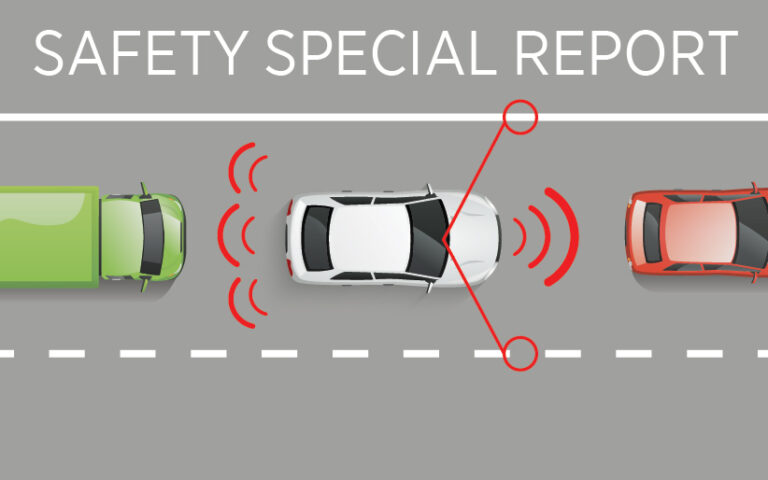– By David Brown –
Should we spend more money on protecting fleet and novated drivers when they have a crash (passive safety) or, on efforts to stop the accident happening in the first place (active safety)?
The answer seems obvious: prevention is better than the cure. But the fact remains that crashes have been an inevitable part of our fleet motoring experience and there are great social benefits in producing vehicles that protect you when accidents happen.
Seat belts and air bags are the two clear examples of passive measures that have saved many lives and injuries. According to the Centre for Accident Research & Road Safety – Queensland, wearing a properly adjusted seat belt reduces the risk of fatal or serious injury by up to 50%.
Other passive measures that have developed over time, that may not be as well-known as seat belts include: the body structure of the car that crumples in a crash and is much better at maintaining the integrity of the cabin; removing sharp edges from car interiors; and collapsible steering wheels.
Seat belt and airbag technology has not stood still. Examples of improvements include seat belts that tighten in a crash and the way in which airbags inflate that give fuller protection.
But active safety is still the holy grail. The research clearly shows safer roads have proved to be a consistent way to reduce deaths and injuries when a crash occurs. If you wander toward the opposing traffic lane it is better to hit a separation barrier
than to go head first into a vehicle coming the other way. If you go off the road to the left and hit a safety embankment rather than hitting a solid object such as a tree. Frangible power poles break away when you hit them rather than stopping you dead.
Well-designed roads also have a huge role to play in active safety. If the road has fewer dangerous curves, better visibility in bad conditions, rough surfaces, you are less likely to crash. Multi-lane roads reduce the frustration of being stuck behind a slow vehicle and makes overtaking a matter of lane changing rather than going into the opposing traffic lane.
When the F6 freeway was built to Wollongong south of Sydney, replacing an old mainly two lane rural highway, the crash rate on the motorway was 90% lower than the old highway.
But modern technology has now massively increased active safety features in vehicles.
Over the years we have seen gradual improvements in brakes, tyres and suspensions. But then we began to see more specific technologies. ABS brakes helped you stop, traction control reduced the chance of losing control and Electronic Stability Control (ESC) has been more successful than we might have expected.
Research conducted in the US has shown that ESC can reduce the risk of single-vehicle crashes by about 40% and up to 67% for 4WD and sports utility vehicles. Similar results have also been seen in Australia.
But the big move now is to not only help you identify the problem but have the car automatically take safety actions on your behalf. Automatic Emergency Braking (AEB) cannot guarantee that you will avoid a collision but even if you still crash, the severity is likely to be diminished.
So while passive safety has been the back bone of vehicle safety design, digital technology is now opening up a whole new world of active safety measures that will help reduce crashes as well as help mitigate against the likelihood of death or injury if a crash does occur.







